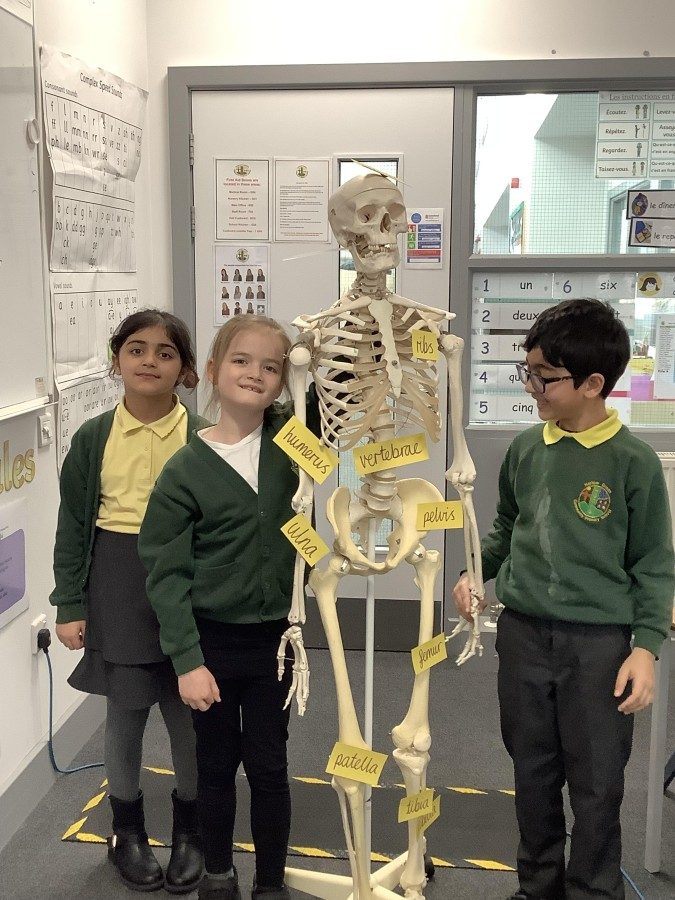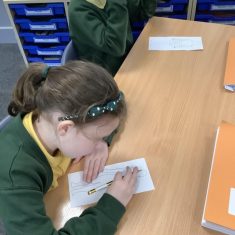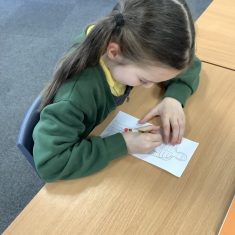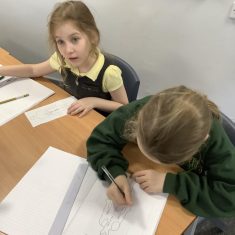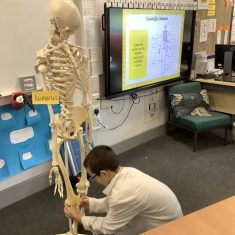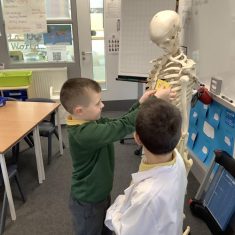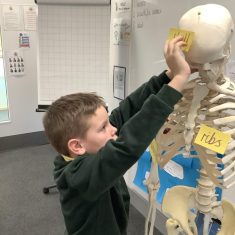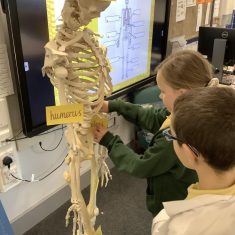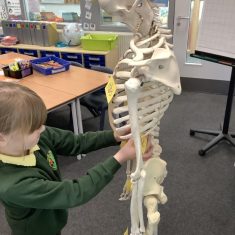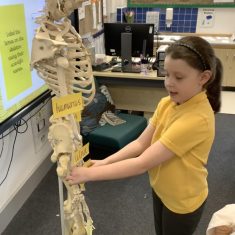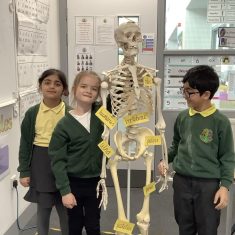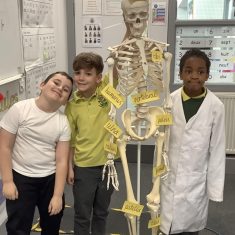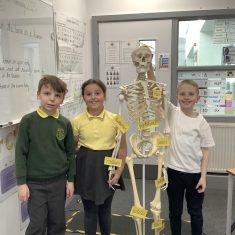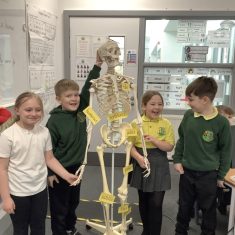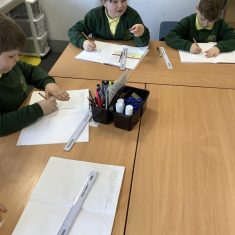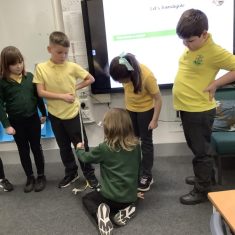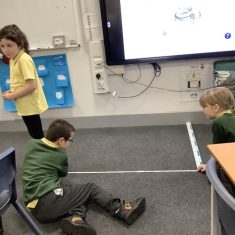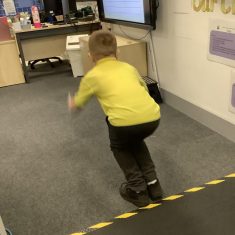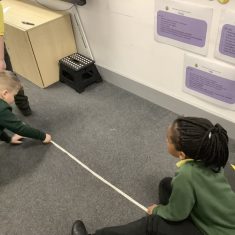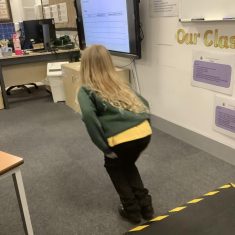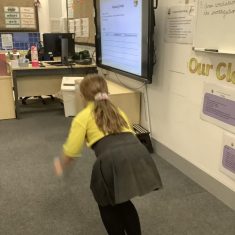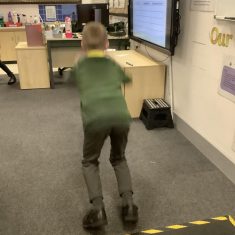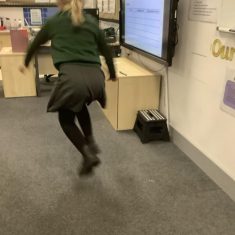In science, the boys and girls have been learning about skeletons. They began by finding out about 3 different types of skeleton; endoskeletons, exoskeletons and hydrostatic skeletons, including the benefits and drawbacks of each. The children then successfully sorted animals based on skeleton type. After this, the children spent time looking closely at the human skeleton. Initially, they were tasked with drawing what they thought the skeleton looked like by feeling where the bones are in their own bodies. They then thoroughly enjoyed meeting ‘ Mr Bones’ himself and have been working hard to learn the scientific names for some of the bones that make up the human skeleton. The boys and girls understand that the longest, heaviest and strongest bone in the human body is the femur. They then eagerly investigated whether people with longer femurs can jump further. They worked as a team to make sure the test was fair and measurements were accurate.
Article 28: We all have the right to a good quality education.
